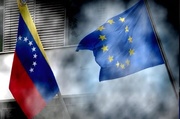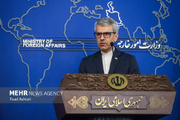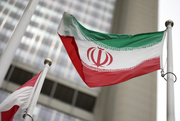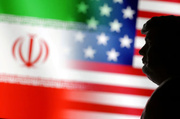On 5 September 2024, during the informal conference of Council of Europe Ministers of Justice in Vilnius (Lithuania), the European Commission signed the Council of Europe Framework Convention on Artificial Intelligence and human rights, democracy and the rule of law on behalf of the European Union.
This Convention is considered the first legally binding international agreement on AI, aimed at ensuring that AI systems align with human rights, democracy, and the rule of law.
The Framework Convention was adopted by the Council of Europe Committee of Ministers on 17 May 2024.
The 46 Council of Europe member states, the European Union, and 11 non-member states negotiated the treaty.
Negotiations on the Convention began back in September 2022 under the auspices of the Committee on AI (CAI) established by the Council of Europe in Strasbourg.
Reportedly, the Council of Europe’s Framework Convention on AI addresses key areas, including transparency in AI-generated content, rigorous risk management, documentation obligations for high-risk AI systems, and the protection of human rights.

The failure of various countries to join the treaty has resulted in a significant international cooperation gap in regulating artificial intelligence.
China and Russia are crucial players in the worldwide balance due to being the top two leading nations in the advancement of this technology and significant figures in this sector.
Their lack of participation in the treaty will certainly lead to a kind of duality in legal and regulatory approaches to artificial intelligence between treaty member states and non-member states.
This could make big differences in how AI is used and monitored around the world.
On the other hand, one of the consequences of the absence of some key countries in the treaty is the possibility of monopolizing the field of artificial intelligence by Western countries, especially members of the European and American Councils.
Western countries that are members of the treaty can pressure other countries to follow these standards by setting global standards for the development of this technology. According to some experts, this could lead to regulations that benefit Western countries and harm other active actors in the field.
Therefore, developing countries with less access to advanced technologies may be particularly pressured. This could lead to limiting the ability of these countries to develop and exploit AI technologies in a way that suits their specific needs.
Another important consequence of the non-globalization of the treaty is the possibility of limiting the access of a wide range of non-member countries to international markets.
Treaty states may ban or restrict the use of AI systems developed in non-member states due to non-compliance with convention standards. This could lead to the segregation of global AI markets, so that systems developed in China, Russia, South Korea, and Singapore cannot access Western markets, as well as restricting or banning the entry of Western products into these markets.
On the other hand, the absence of powers such as China and Russia in the treaty could also lead to the development of alternative models for the regulation of artificial intelligence by these countries.

The West's big rivals will likely seek to create and promote their frameworks and standards in the field of artificial intelligence in response to the formation of Western standards. Standards that differ from Western principles and values, which leads to the emergence of two parallel systems in the world.
China, being a global leader in artificial intelligence and digital technology, has the potential to set new standards that Asian and African developing nations can adopt.
This may lead to global polarization in the field of technology and the intensification of geopolitical competition.
Finally, the absence of other large and influential countries in the treaty and the formation of parallel systems regulating this technology globally could limit the access of non-member countries to advanced AI technologies.
Treaty member states may refuse to share knowledge and AI technologies with non-member states due to non-compliance with common standards. This will be especially problematic for countries that do not have enough resources to independently develop AI technologies.
For example, developing countries that depend on the resources and expertise of more advanced countries are limited in access to critical AI technologies.
This could create global inequalities in access to AI technologies and reduce the ability of non-member countries to develop economically and socially.
The measure is a positive step toward creating a legal framework to use the emerging technology.
The treaty is a practical effort to protect human rights and democracy from the dangers of artificial intelligence and strengthen principles such as transparency, accountability, and non-discrimination. On the other hand, the absence of major global actors further highlights the limitations of this international effort.
MNA

























Your Comment